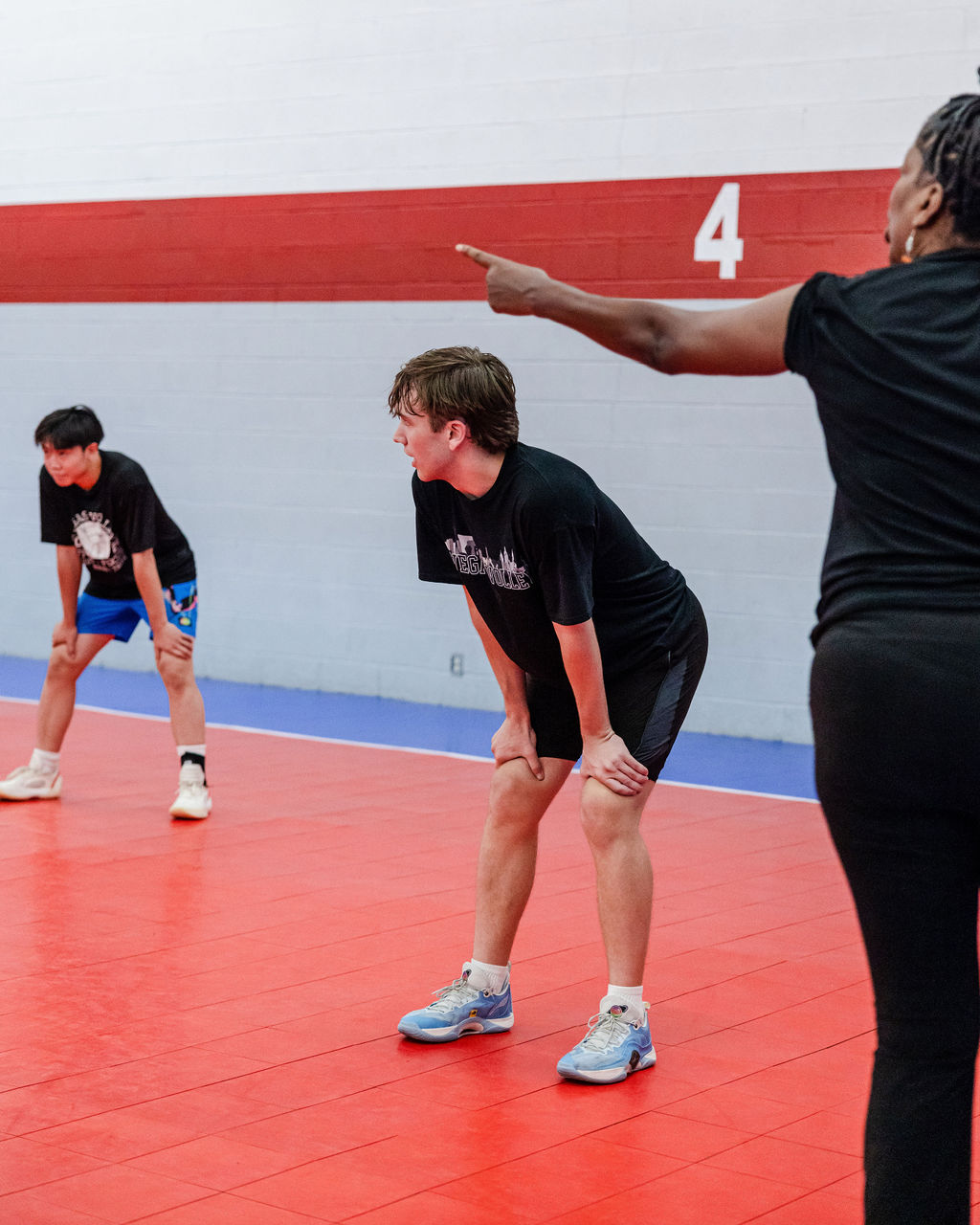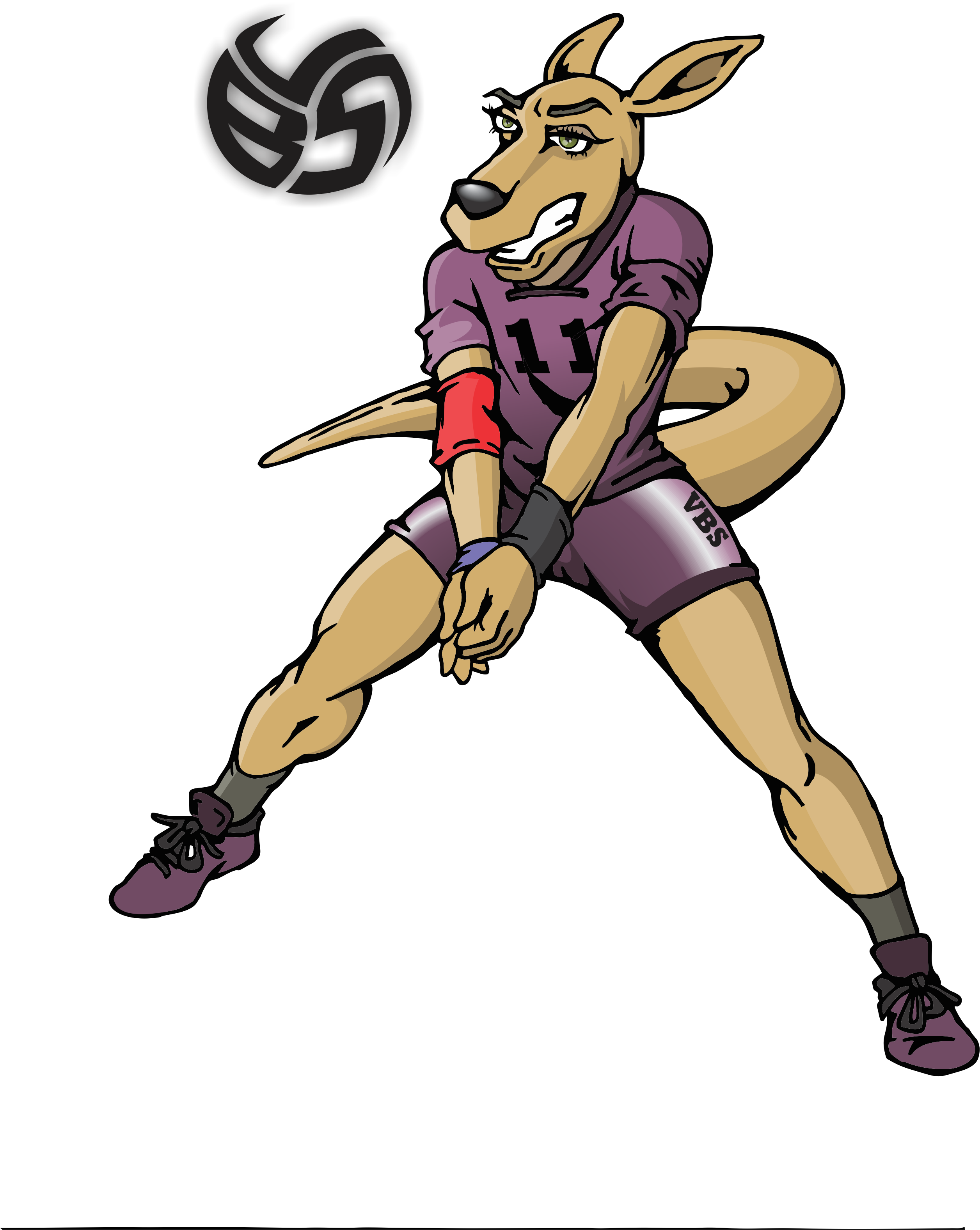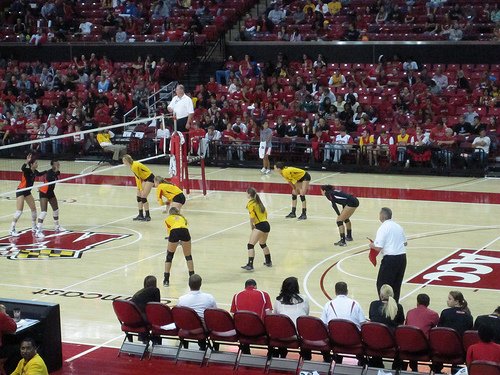- Improve Your Volleyball with Coach April
- Basic Volleyball Skills
- Volleyball Bump Pass
 Dear Volleyball Mom,
Do You Know What Sets My Private Volleyball Training Apart From Anyone In Vegas?
I invite You to read what my private volleyball training mission says before considering hiring me as a private volleyball coach because I'm not available for everyone.
Dear Volleyball Mom,
Do You Know What Sets My Private Volleyball Training Apart From Anyone In Vegas?
I invite You to read what my private volleyball training mission says before considering hiring me as a private volleyball coach because I'm not available for everyone.Learn 3 Important Steps To Improve Your Volleyball Bump Pass Skills
Players use these steps to passing a volleyball to get the ball to a player or over the net holding their wrists together to form a platform with the forearms
 The volleyball bump pass, also known as the forearm pass, is a critical skill in volleyball, allowing players to transfer the ball from one teammate to another or over the net with control and accuracy.(Shots by Shanty)
The volleyball bump pass, also known as the forearm pass, is a critical skill in volleyball, allowing players to transfer the ball from one teammate to another or over the net with control and accuracy.(Shots by Shanty)Welcome to my comprehensive guide on how to master the volleyball bump pass technique.
In this article, I take you through my step-by-step guide, complete with clear instructions and visuals, on how to execute the perfect bump pass.
I also provide you with valuable tips and techniques to improve your passing skills and contribute to a more effective and cohesive team offense.
Whether you're new to the sport or looking to fine-tune your technique, this guide will help you become a consistently reliable passer on the volleyball court.
So, let's get started and take your bump pass skills to new heights!
Mastering the Volleyball Bump Pass Technique
What're the steps to a good volleyball bump pass?
Passing in volleyball is the way to get the ball from one person to another or from one side of the net to the other side by using your forearms as a tool that creates a flat platform to make contact with the ball.
Passing occurs most often as the first of three contacts the team in serve receive uses to set up their attack against the defensive team.
Steps To A Good Volleyball Bump Pass:
What is the correct way to pass a volleyball?
Creating a Flat Platform for Contact
- keep your hands and wrists pressed together with the fist of one hand inside the other hand while the thumbs of both hands point down to the ground.
Keeping the thumbs pointed to the ground when contacting the ball keeps your arms straight.
- Your arms need to be kept straight in order to maintain a flat surface like the one you would see on a table top.
As we say in volleyball, this is your "platform."
Creating a Flat Platform for Contact: Keep hands and wrists pressed together with the fist of one hand inside the other hand while thumbs of both hands point down to the ground.
- You would then use your "platform" to make contact with the ball, while angling your arms and shoulders to your target.
This guides the ball to your target your setter or to another hitter or even across the net depending on where you want the ball to go.
Coach April Chapple's Volleyball Passing Tips For Youth Volleyball Players
 |
 |
Steps To A Good Volleyball Bump Pass:
The "Ready" Position
Perfecting the Ready Position for the Bump Pass
Before the rally starts, a player will position their body in an athletic stance, which many coaches call the "ready position."
Positioning Your Feet, Knees, and Legs
Feet are just outside the shoulders, with knees slightly bent in a loaded position so its easy to move right, left front or backwards to get to where the ball has been served.
Maintaining Proper Shoulder Alignment
Shoulders are over the knees and arms are held out in front of you.
Your shoulders and upper body should be leaning forward a bit and parallel and squared to the net while you face the server.
What's The Optimal Distance for Your Arms Away from the Body
I tell my clients, club players and boot campers that you should be able to fit a volleyball ball under your armpits.
To Review What
The Volleyball Bump Pass
Technique Is
Step-by-Step Guide: Volleyball Bump Pass Technique
Step 1: Position yourself in the "ready position"
- Stand with your feet just outside your shoulders keeping them shoulder-width apart.
- Bend your knees slightly to maintain a loaded position.
- Keep your shoulders over your knees and arms held out in front of you, palms up
- Lean your upper body forward a bit and face the server.
Step 2: Form the correct hand and wrist positioning
- Press your hands and wrists together, with the fist of one hand inside the other hand.
- Point both thumbs down towards the ground.
- Maintain this position throughout the bump pass.
I like to work on this 3 person "Dodgeball" drill where the person in the middle has to choose which side to get their midsection out of the way of the oncoming ball that's being tossed at their chest before they present their passing platform with an angled shoulder positioned towards the target.
Step 3: Create a flat platform for contact
- Keep your arms straight to maintain a flat surface, similar to a tabletop.
- Avoid bending your elbows during the contact with the ball.
- Aim to make contact with the ball on the forearms of both arms.
Step 4: Angle your arms and shoulders towards the target
- Adjust the angle of your arms and shoulders to direct the ball to your desired target.
- For passes to your setter or another hitter, angle your arms and shoulders towards them.
- To pass over the net or to a specific location on the court, adjust the angle accordingly.
Step 5: Follow-through and recovery
- After making contact with the ball, continue the motion through with your arms but stop at the level of your belly button....too high is too much
- Follow the ball with your eyes to ensure it is going towards the intended target.
- Quickly recover your ready position to be prepared for the next play.
Tips and Techniques for Effective Passing in Volleyball
1. Focus on accuracy over power:
The bump pass in volleyball requires precision rather than brute force. Concentrate on controlling the ball and accurately angling your platform to your target.
Watch how Tstreet 17-2s Head Coach Kenny Buen stays balanced and accurately passes the ball to my hand, his target without making me move while I'm holding the camera.
2. Stay balanced:
Maintain good balance throughout the pass by distributing your weight evenly and keeping a stable base while staying low. This will help you execute the technique effectively and react to the ball's trajectory.
3. Use your legs and core:
Transfer power from your legs and core into the bump pass. Bend your knees and engage your core muscles for added stability and power in your pass.
4. Anticipate the ball's trajectory:
Read the server's body position and the ball's flight path to anticipate where the ball will land. This enables you to position yourself correctly and make a successful pass.
5. Practice proper timing:
As the ball approaches, time your movement and contact to meet the ball at the optimal spot on your forearms. Practicing timing is essential for accurate and controlled passing.
6. Communicate with your teammates:
Effective passing requires good communication. Signal your intentions to your teammates, call out who should take the pass, and help direct the ball to the desired target.
Remember, when you pass a volleyball, you are transferring the ball from one player to another or over the net
- without letting the ball come to a complete stop,
- while clasping both hands together at the wrists and
- contacting the ball on your forearms
Whether you call it the volleyball bump, the serve receive, the underhand pass or the forearm pass every player needs to master the art of controlling the ball while consistently passing it to the intended target.
You do that by doing lots and lots of reps which we do and practice in our Boot Camp classes.
By following the step-by-step guide and implementing the tips and techniques, you can improve your bump pass skills, enhance your passing accuracy, and contribute to a successful offense in volleyball.
Steps To Passing A Volleyball:
Where Do You Go From Here?
Your three options are:
- You can learn more about Passing in volleyball by visiting the Related Links below.
- Follow the suggested reading on our Sitemap page Learning How To Play (Sitemap)
- Or visit the pages in the How to Play Volleyball section in the drop down menu at the top of the page to get started.
- Before leaving this page Say "Hi" to Ms. Resee the Kangaroo, wearing the #11 jersey below. She's a left side hitter with precision passing and a member of the VolleyBragSwag All Beast Third team.
Meet Resee the Kangaroo and Passing Specialist on
VolleyBragSwag's All Beast Team
SUSCRIBE
To My Email Newsletter Below!
From Lady Vol to Legend: Coach April Produces Powerful Passionate Players...is that you?
What Are You Looking For?

Hi there!
Thanks for stopping by. Hope you learned something today that will help you reach your volleyball goals.
Be sure to subscribe to my email newsletter so you can learn more each week!
Stay strong! Stay motivated!
-Coach April

SUSCRIBE
to my email newsletter below!
Vegas Volleyball's Unsung Heroes: Celebrating Moms with Peace Love Volleyball Shirts
Ready to energize your volleyball mom journey?
Subscribe to my 'Producing Powerful Passionate Peaceful Players' email list above on ImproveYourVolley.com.
You'll receive energy-boosting tips, exclusive insights from me, Coach April Chapple on maintaining momentum in volleyball.
Let's power up the Vegas volleyball scene together!
Recent Articles
-
Frequently Asked Libero Volleyball Position Questions Answered
Apr 14, 25 08:10 PM
I answer the most frequently asked libero volleyball position questions many players and coaches ask that will help you learn about the player responsibilities. -
Coach April's Peace Love Volleyball Phrases For T-Shirts Honor Moms
Apr 13, 25 03:49 PM
Whether on the court or in everyday life, April Chapple's volleyball phrases for t-shirts are serving inspiration for players and moms, one message at a time. -
What Is A Setter In Volleyball? My Setting Guide With Answers To FAQs
Apr 13, 25 12:36 AM
Learn what a volleyball setter is from a champion coach. Get expert insights, training tips, and proven strategies for volleyball's most strategic position.
 Resee the Kangaroo Shirts
Resee the Kangaroo Shirts Resee the Volleybragswag Kangaroo Shirts available now.
Resee the Volleybragswag Kangaroo Shirts available now.





















































